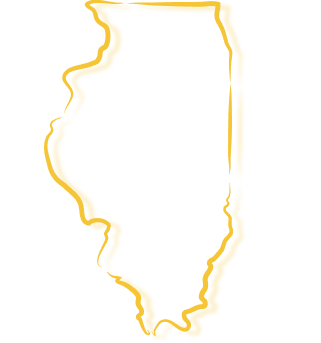U-Turns in the 314? Legal or Illegal in St. Louis?

By Zane T. Cagle | January 28, 2020 | Car Accidents
The U-Turn is extremely popular in Missouri, and St. Louis specifically. You want to make sure you are making a legal U-turn to avoid citations and car accidents. While you are driving around St. Louis, you may see many drivers making a U-turn in all kinds of traffic. Since it is so common, you may wonder if U-turns are always legal and how do you know? Many wonder how they are to be compensated if they have been struck while making a U-turn. Unfortunately, individuals often only question the legality of a U-turn after receiving a citation or being involved in a motor vehicle crash.
U-Turns are Legal if “Safe to do so”
Keep in mind that on many roadways in St. Louis where U-turns are legal but, there are many roadways that specifically forbid U-turns. On many major thoroughfares, there are signs clearly stating that U-turns are not permitted. Most of us use the U-turn as it is convenient and often results in avoiding heavy traffic areas. BUT, there is a key phrase to remember in the statute of employing the U-turn.
According to MO Revised Statute 304.341.1, “It shall be unlawful for the driver of any vehicle to turn such vehicle so as to proceed in the opposite direction at any intersection controlled by a traffic signal or police officer; nor shall such turn be made at any place unless the movement can be made in safety and made without interfering with other traffic”.
Thus, if you are on a street where U-turns are permitted, you can only make a U-turn if it is “safe to do so”. Thus, if you are struck by another vehicle while you are engaged in a U-turn, it was not safe to do so. A resulting outcome which is a motor vehicle collision would usually be clear evidence that it was not safe for you to make the U-turn. No matter how passionately you present your argument, the very event of a crash can be overwhelming evidence that the U-turn was not safe to execute.
Certain Roadways Post No-U-Turn Signage
Often signs on roadways will actually say ‘No U-Turns’. Common places where you should absolutely not use a U-turn include busy intersections and intersections where pedestrians frequent. I know, we have all been in downtown traffic after a baseball or hockey game where the four lanes of traffic somehow become five lanes of bumper to bumper traffic. To add to that mayhem, there always seems to be a driver that decides they cannot wait any longer and executes a U-turn. We are all generally astounded by that move and it may result in lots of honking and name calling. Worse yet, it can result in a motor vehicle crash. While the scenario sounds bananas, we’ve all seen this happen. This might be the most obvious example of how to NOT make a legal U-turn.
Riverfront Times author recalled their personal experience of making a U-turn on Tucker Blvd in downtown St. Louis just a few years ago. It continues to be a question for many St. Louis drivers even those who have driven here for many years. While the author did not receive a citation, he did get a lesson on where you should not make a U-turn.
Liability Considerations before You Make a U-Turn
PAY ATTENTION. Other vehicles do not simply “come out of nowhere”. If you are traveling on St. Louis streets, it will be hard to sell that a vehicle was traveling ‘warp speed’ between lights to back up a “came out of nowhere” argument. More likely than not, the idea of “they came out of nowhere” statement usually means “I did not see them”. Failing to see another car is far more logical than the car “coming out of nowhere”. Granted, when you are in a motor vehicle crash, often you feel like the other car “came out of nowhere”, but the laws of physics let us know that a car cannot “appear out of nowhere” but more likely than not, we simply did not see them.
The key fact is that if you are undertaking a U-turn, you absolutely must look multiple times to be absolutely certain there are no other vehicles anywhere near your location. Furthermore, you must be sure you are on a street where you can actually legally make a U-turn. If you are hit while you are executing a U-turn, you may be ticketed but you can be assumed the insurance carrier will credit the fault of the crash to you.
We make U-turns to save time for the most part. Be smart about making U-turns. If you are going to make a U-turn, you are responsible to be certain that you will not impact other drivers. You cannot assume that other drivers will respect your “right” to a U-turn and you cannot assume that other drivers will slow down and give you space as they may not even see you.
Possible Injuries Due to U-Turn Crashes
Most of us think of making U-turns on city streets where most people are traveling under 50 mph. While you are in the midst of a U-turn and another car hits you, the impact can be immense. Depending on the angle of the crash, multiple types of injuries can be incurred. Sometimes the crash can be head-on, a side swipe and even a rear-end collision. Needless to say, if you are hit head on while making a U-turn, the impact of the other car can result in serious injury or death.
Broken bones- in high impact crashes, broken bones are common including broken legs, arms and ribs. Broken bones have to be addressed immediately. The most overlooked broken bone that most people fail to address are broken ribs. Many of us have broken a rib in our life and we know broken ribs are extremely painful if you want to breathe or laugh (clearly, breathing is required). With broken ribs, the doctors will want to be certain lung linings have not been punctured and you will want to see the doctor because multiple broken ribs are not only painful but shallow breathing can make many of us prone to lung complications such as pneumonia.
Neck & Bain Pain– neck and back injuries are common in any type of motor vehicle collisions due the pattern of impact. Spinal injuries can range from broken bones, disc injuries to strain and sprain. Immediately after a crash, the emergency room medical staff will rule out whether or not you have broken a bone through x-rays and CT’s. When you are discharged from the ER, the discharge papers will almost always tell you to follow up with your primary care physician. If you continue to have pain, then you must follow up with a primary care doctor for treatment. You and your primary care doctor will develop a treatment plan and your PCP may refer you to a specialist. At best, neck and back pain can be muscle strain that resolves in a few weeks. However, continued pain symptoms may be due to a possible disc injury.
When in Doubt, Don’t Make a U-Turn
While driving, if you feel a little uneasy about making the U-turn, go with your gut. If it feels “iffy”, then why risk it? So, if you are making a U-turn, you must understand that you are risking it every time and if you are hit while you are carrying out a U-turn, then your liability issues are large. Each time we make a U-turn, we are quickly evaluating in a few seconds whether the turn is needed and safe.
Injured due to another driver making a U-turn? Call us toll free 1.800.685.3302 or locally 314.276.1681
Contact Us Today
The Cagle Law Firm serves accident and injury clients throughout St. Louis and the greater St. Louis metro area, including St. Louis Counties of Chesterfield, Wildwood, Eureka, Ladue, Olivette, Clayton, Kirkwood, Fenton, Affton, and Jefferson Counties of Arnold, High Ridge, Antonia, House Springs, and the eastern Missouri and southern Illinois communities. If you or your family needs legal assistance with your personal injury case, call The Cagle Law Firm at (314) 276-1681 or use our online contact form to request a free case review or get more information.
Areas Served
The Cagle Law Firm – Missouri
The Cagle Law Firm – Illinois
The Cagle Law Firm – Kentucky
CONTACT THE CAGLE LAW FIRM TODAY
Request your FREE CASE REVIEW today by calling (314) 276-1681 or by sending a message through the site contact form. Your contact info stays private and is only used to reply to your inquiry.
Whether you need information about a new injury or existing injury, our lawyers answer your questions with no-risk and no followup marketing.
Free Consultations and Case Reviews
Questions? Ask An Attorney
Fields marked with an * are required
Copyright © 2025 St. Louis Personal Injury Lawyers | The Cagle Law Firm. All rights reserved.
Disclaimer | Site Map | Privacy Policy
Get a free case review with St. Louis' best personal injury lawyers to help you win top compensation





